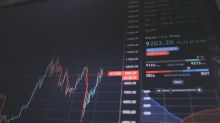| 前收市價 | 52.95 |
| 開市 | 52.55 |
| 買盤 | 48.40 x 800 |
| 賣出價 | 56.48 x 800 |
| 今日波幅 | 51.32 - 52.87 |
| 52 週波幅 | 28.40 - 57.39 |
| 成交量 | |
| 平均成交量 | 2,120,250 |
| 市值 | 6.909B |
| Beta 值 (5 年,每月) | 1.28 |
| 市盈率 (最近 12 個月) | 10.37 |
| 每股盈利 (最近 12 個月) | 5.03 |
| 業績公佈日 | 2024年7月19日 |
| 遠期股息及收益率 | 2.84 (5.45%) |
| 除息日 | 2024年6月14日 |
| 1 年預測目標價 | 59.28 |
 Insider Monkey
Insider Monkey10 Best Dividend Leaders to Buy According to Analysts
In this article, we discuss 10 best dividend leaders to buy according to analysts. You can skip our detailed analysis of dividend stocks and their performance over the years, and go directly to read 5 Best Dividend Leaders to Buy According to Analysts. Income generation has always been a primary goal for investors when making […]
 Insider Monkey
Insider MonkeyComerica Incorporated (NYSE:CMA) Q1 2024 Earnings Call Transcript
Comerica Incorporated (NYSE:CMA) Q1 2024 Earnings Call Transcript April 18, 2024 Comerica Incorporated isn’t one of the 30 most popular stocks among hedge funds at the end of the third quarter (see the details here). Operator: Greetings, and welcome to the Comerica First Quarter 2024 Earnings Conference Call. At this time, all participants are in […]
 Investor's Business Daily
Investor's Business DailyStocks Close Lower As Middle East Tensions Rise Again; Nvidia Tests Key Level
An erratic Nasdaq composite reversed back into negative territory Thursday and closed down more than 0.5%, as tensions in the Middle East bubbled up again. Chip giant Nvidia rallied nearly 0.8% as it tested a key technical level, the 50-day moving average. Taiwan Semi was not the sole chip play down.